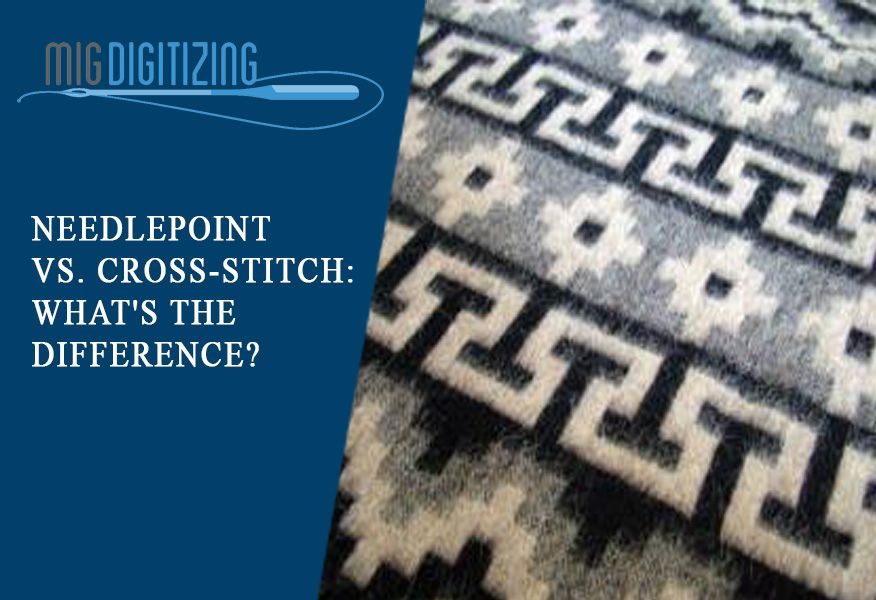
"Half the labour, twice the fun!" says needlepoint. That's what we tell visitors to our store who have never tried needlepoint but have done cross stitch.
Of course, this is all in good humour, as cross stitch and needlepoint are both calming, delightful pursuits that are beneficial to our health, manual dexterity, and mental acuity. In terms of practicality, the basic needlepoint stitch is around half of the cross stitch. On your needlepoint canvas, you can also use a cross stitch, as well as a variety of other stitches. Crafts made using a cloth, thread, and needle have been increasingly popular in recent years. With the passage of time, many trades have evolved.
Embroidery is thought to be therapeutic and beneficial to the brain, preventing it from premature aging and aiding in the treatment of diseases like anxiety and depression. It also aids in the expression and enhancement of creativity. While needlepoint is essentially a skill that involves stitching with a needle and coloured thread or yarn, there are many various styles and approaches to it. Cross stitch, embroidery, plastic canvas, and needlepoint are just a few examples.
Cross stitch is a specific sort of needlepoint stitch. Needlepoint refers to any design embroidered onto canvas with a needle using repeating stitches. Needlestitch and cross stitch, on the other hand, are not technically the same, as masters of the craft will tell you. Needlepoint stitches include more than just the familiar X stitch of cross stitch, but the name has come to be associated with only cross stitch by modern enterprises.
What is Needlepoint and How Does It Work?
This is a surface embroidery technique used on very fine canvas that dates back to the ancient Egyptians. It is, however, hand-stitched rather than woven on a loom. It's usually done using yarn, although strands of embroidery floss can give it a different aesthetic. This method also allows you to stitch over the foundation canvas layer with a variety of stitches.
It's commonly used to embellish things like jewellery, purses, belts, and even wall hangings.
What is the meaning of cross stitch?
This is a form of embroidery that uses x-shaped stitches. Canvas, floss, or linen fabric are often utilised materials, and it is mostly employed to create pictures for framing.
Cross Stitch and Needlepoint - What's The Difference?
Most cross stitching is done with stranded cotton or silk threads. Because the fabric is so closely woven, the thread must be very fine. Needlepoint, on the other hand, employs a variety of thread types, including silk, wool, ribbon, thread combinations, metallic threads, and, of course, cotton floss and stranded silk.
The Stitches: All cross stitch stitches (well, almost all) are done in an x pattern. Half of a cross stitch is the fundamental needlepoint stitch.
Consider performing the basketweave stitch, which is also a Tent stitch, if you're stitching a vast area on your needlepoint canvas. It will assist in preventing the canvas from becoming deformed. Begin by stitching a tent stitch on the left side of a vertical thread (blue). Continue to the left, following the vertical thread down (green). On the horizontal thread, the following row will appear (pink).
Needlestitching employs a number of stitches in addition to a variety of threads. This allows you to distinguish one area from the others. Some stitches were inspired by embroidery, while others were invented by needlepoint artists like you and me. One stitch, the x stitch, was inspired by a cross stitch.
Design: A needlepoint canvas can be painted in two ways: stitch painted or hand painted (to be clear, both ways are hand painted). It is no secret that needlepoint is an expensive pastime. Because the artist has taken the guessing game out for you, stitch painted is probably the easiest.
Each junction has been drawn on the canvas by the designer, indicating where each stitch should be placed and in which colour. where there's a lot of ambiguity about which colour goes where. Some people find this style of stitching enjoyable since it allows them to express their creativity, but others find it quite stressful! On the other side, you'll usually see a hand painted canvas on projects with shading or curving lines.



